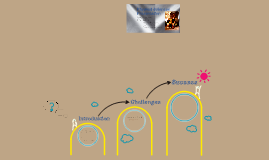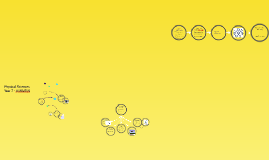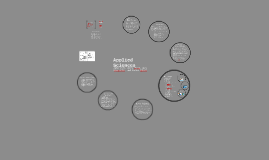Physical Sciences Presentation ©
Transcript: You should be wondering what's the meaning of "washer" and "fluorescent starter" we'll cover them in the next slide Step 1 : Soak the three pieces of cardboard (which you have trimmed into a circle - should be about the size of the zinc washer) into saltwater with a ratio of about 1 tablespoon of salt to 100ml of tap water. Step 2: Put the following items in these order: Zinc at the bottom, cardboard in the middle, and the 1-cent coin on top. Step 3: Nope, no step 3 :D You're done! Now let's test the voltage Time to test the calculator :D This is a voltaic pile :D It's the ancient origin of batteries. How they first came about. Challenges Well, you might not have heard of them, but that's not important. We're going to show you. What is a voltaic pile. 1 Cell Time for some in-depth explanation In case you guys think it s fake :P The calculator couldn't work well and automatically turned off itself after 5-30 seconds of use. and thats some suspense over there* Definitions from google: ' Used masking tape to wrap up the voltaic pile. Found that it was not working well because the electrolyte dried up really fast due to the masking tape sucking the water up. YAY!!!! Wait...... Bought a random cheap China calculator and opened it up. So this is a little improvisation :D You're done! Now let's test the voltage :D Lets move on to how we did it :D Used masking tape to wrap up the voltaic pile. Found that it was not working well because the electrolyte dried up really fast due to the masking tape sucking the water up. THAT DOESNT MAKE SENSE, WE HAVE ALREADY SUCCEEDED :D Introduction ~ MOVING ON ~ Calculators, Torchlights, Diodes, etc :D Also, I used 4 cells for this So... Prior to this, I actually made a voltaic pile of 3 cells and tried to power my calculator Also, the wires' contacts were not well stuck together. Also, the wires' contacts were not well stuck together. << End result Also, the wires' contacts were not well stuck together. Snipped the speaker wires off Step 2: Drill a hole into the other end of the starter. Prior to this, I actually made a voltaic pile of 3 cells and tried to power my calculator Physical Sciences Presentation Topic Chosen: Innovative ways to consume less energy at home Explanations on its theory Wire B The calculator couldn't work well and automatically turned off itself after 5-30 seconds of use. What are we doing? And some wires Basically almost anything that requires 1.5V to work. (3 cells produce about 1.5V to 2V) However, as there are not enough amperes, more cells are encouraged. I used 4 cells for this - the more the merrier, as long as you have the materials! Group Members: Ashraf Roshan Premakumar Ganesh Uses 3 pieces of cardboard /mounting board / paper towels Fluorescent starter: A device with a voltage-sensitive switch and a capacitor that provides a high-voltage pulse to start a fluorescent lamp Wire A DID YOU REALLY THINK THAT WAS ALL? WE STILL HAVE A VIDEO !!! . Success Challenges we faced. That was when I stumbled upon my awesome fluorescent starter and I decided to reuse it by removing the switch and the capacitor inside my starter. And VOILA! I have my voltaic pile holder :D Also, the wires' contacts were not well stuck together. Group Leader: Chan Jun Yi Extended the wires longer so that I can easily access the positive and negative ends from the outside. Acknowledgements Washer: A flat ring or perforated piece of leather, rubber, metal, etc., used to give tightness to a joint, to prevent leakage, to distribute pressure, etc. So, here are the steps to making a voltaic cell. The voltaic pile was the first electrical battery that could continuously provide an electrical current to a circuit. Recycled materials we used to make a voltaic cell . Step 1: Using masking/electrical tape, tape one end of wire A to the 1-cent coin, and wire B to the zinc washer. Used masking tape to wrap up the voltaic pile. Found that it was not working well because the electrolyte dried up really fast due to the masking tape sucking the water up. Working just fine ! :D Homemade batteries :D ~ Using the concept of voltaic piles :) A challenging project :P 1 recycled fluorescent starter Used masking tape to wrap up the voltaic pile. Found that it was not working well because the electrolyte dried up really fast due to the masking tape sucking the water up. Final product should be something like... Also, the wires' contacts were not well stuck together. Three 1-cent coins I found dated after 1987 *cos they're copper-plated on the outside Finally the time to really test it out. Ooops, I forgot to tell you what the wires were for! 3 recycled zinc washers I found at home Used masking tape to wrap up the voltaic pile. Found that it was not working well because the electrolyte dried up really fast due to the masking tape sucking the water up. Step 3: Slot one end of Wire A through the starter and repeat the same for wire B Zinc washer Cardboard 1-cent coin Zinc washer Cardboard 1-cent coin Zinc Wire

















